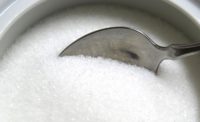TECH FLASH
Scientists find ‘shocking’ way to reduce fat in chocolate
Running an electric field through liquid chocolate during the manufacturing process decreases its viscosity.

Who wouldn’t eat more chocolate if there were no fear of packing on the pounds? Well, chocolate lovers may soon have a reason to celebrate. Scientists at Temple University have found a way to reduce the fat content of one the world’s favorite treats through the use of a little shock therapy.
By running an electric field through liquid chocolate during the manufacturing process, scientists were able to decrease its viscosity. The researchers’ “Electrorheology leads to healthier and tastier chocolate” findings were published in last week’s issue of the Proceedings of the National Academy of Sciences.
Finding a way to reduce the high fat levels of chocolate (typically 40 to 60 percent) has vexed scientists for decades. According to Temple professor and lead author Rongjia Tao, the problem stems from the liquid state in the manufacturing process. When fat is removed, the chocolate’s consistency changes, and it clogs up pipelines, jamming the manufacturing process.
Tao and his team believed they could use an electric field to reduce the viscosity and, at the same time, increase the particles’ density to maintain the proper flow. The key was applying the electric field in the same direction as the flow. (Traditionally, the use of electrorheology has been perpendicular to the flow.)
“Applying unconventional electrorheology to liquid chocolate with [the] applied field in the flow direction, we aggregate the cocoa particles into prolate spheroids in micrometers,” the authors say. “This microstructure change breaks the rotational symmetry, reduces liquid chocolate’s viscosity along the flow direction and increases its maximally random jammed density significantly.”
Through this method, the scientists reduced the fat content of several different chocolate brands by up to 20 percent. According to the Associated Press, the tests were partially financed by Mars chocolate company; Temple holds a patent on the process.
Looking for a reprint of this article?
From high-res PDFs to custom plaques, order your copy today!






